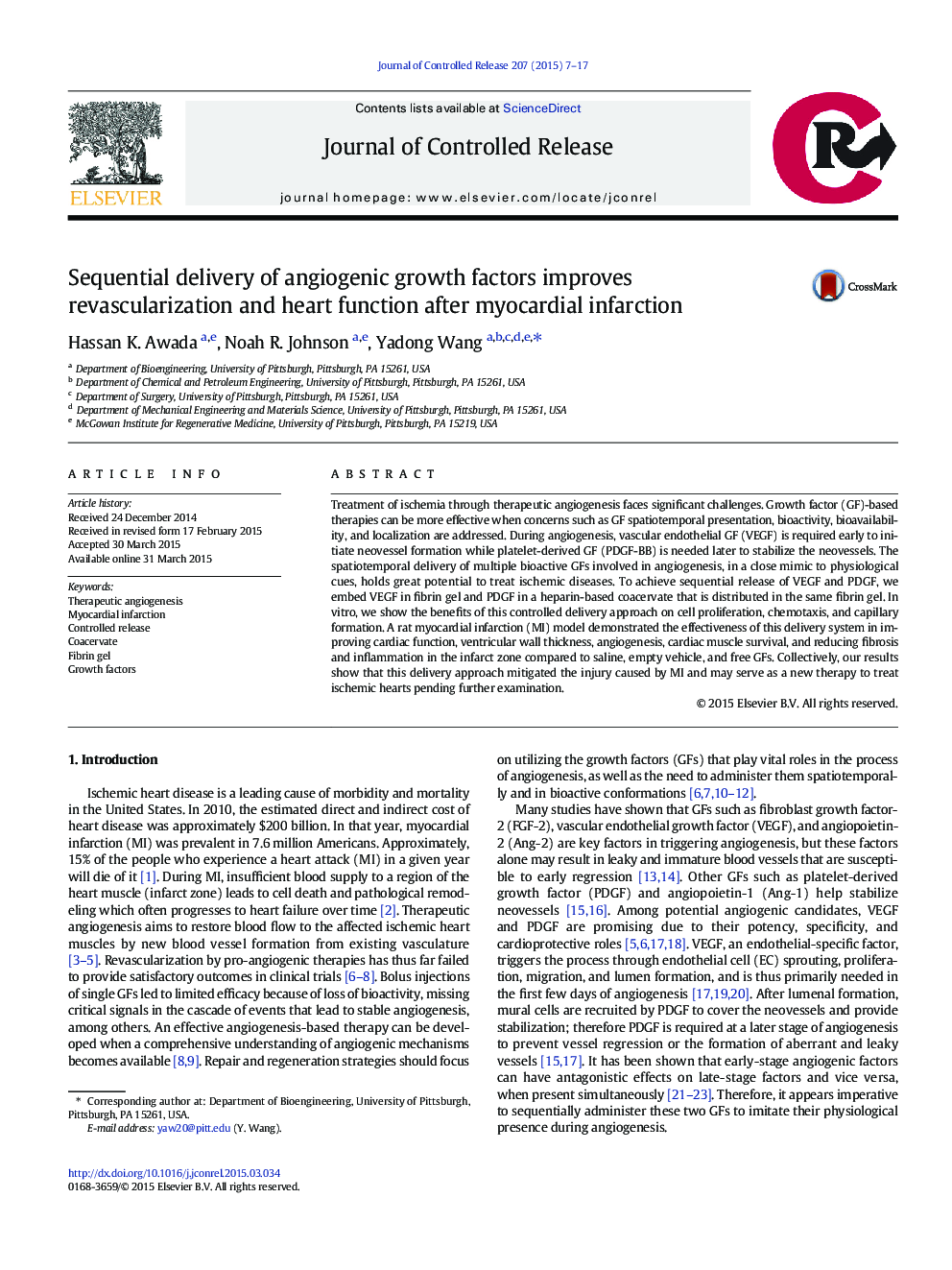| Article ID | Journal | Published Year | Pages | File Type |
|---|---|---|---|---|
| 1423714 | Journal of Controlled Release | 2015 | 11 Pages |
Treatment of ischemia through therapeutic angiogenesis faces significant challenges. Growth factor (GF)-based therapies can be more effective when concerns such as GF spatiotemporal presentation, bioactivity, bioavailability, and localization are addressed. During angiogenesis, vascular endothelial GF (VEGF) is required early to initiate neovessel formation while platelet-derived GF (PDGF-BB) is needed later to stabilize the neovessels. The spatiotemporal delivery of multiple bioactive GFs involved in angiogenesis, in a close mimic to physiological cues, holds great potential to treat ischemic diseases. To achieve sequential release of VEGF and PDGF, we embed VEGF in fibrin gel and PDGF in a heparin-based coacervate that is distributed in the same fibrin gel. In vitro, we show the benefits of this controlled delivery approach on cell proliferation, chemotaxis, and capillary formation. A rat myocardial infarction (MI) model demonstrated the effectiveness of this delivery system in improving cardiac function, ventricular wall thickness, angiogenesis, cardiac muscle survival, and reducing fibrosis and inflammation in the infarct zone compared to saline, empty vehicle, and free GFs. Collectively, our results show that this delivery approach mitigated the injury caused by MI and may serve as a new therapy to treat ischemic hearts pending further examination.
Graphical abstractFigure optionsDownload full-size imageDownload high-quality image (202 K)Download as PowerPoint slide
